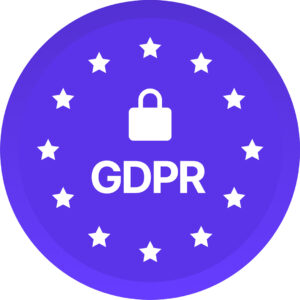Bullying isn’t confined to childhood or locker rooms. It doesn’t disappear when we trade jerseys for business attire. It adapts, taking on new forms in different environments. Whether on the ice, in the boardroom, or anywhere in between, the impact is real—and lasting.
A teenage hockey dream turned nightmare
Picture a small-town Canadian rink in the mid-’80s.. I was 14, and hockey was my everything. Every Friday night, my mom would pile my gear into the back of the station wagon, and I’d step onto that ice dreaming of being the next Gretzky. But my hockey dreams weren’t just about hat tricks and highlight reels. They were about fitting in, being part of something bigger than myself.
Then came Tommy. Two years older, bigger, stronger—the kind of player coaches loved because he played “tough.” But toughness isn’t just about checking someone into the boards—it’s about how you treat people, and Tommy didn’t get that memo.
At first, it was small digs—jokes about my hand-me-down skates, comments about how I played more with my heart than my fists. Then, it escalated. Slashes when the coach wasn’t looking. “Accidental” hits into the boards. My helmet yanked off mid-drill. And the worst part? The laughter. The silence. The complicity.
Tommy wasn’t just attacking my skills; he was coming for who I was, making it personal. He’d call me names, throw gay slurs at me in the locker room, make cracks about how I didn’t “fit in” with the rest of the guys. I didn’t even know who I was yet, but Tommy decided for me—and made sure everyone else did too.
One night, after a particularly rough game, I sat in the locker room, staring at my bruised ribs. Tommy walked by, smirked, and said, “You don’t belong here, rookie. Maybe go figure out where the other fairies play.”
Two weeks later, I quit the team. And just like that, hockey—my first love—was gone.
The lingering impact of bullying
You might be thinking, “Well, that was a long time ago. Water under the zamboni, right?” I wish.
The feeling of being made small, of knowing people saw what was happening and didn’t step in—it sticks with you. It showed up in my first job, when a senior colleague dismissed my ideas, interrupted me in meetings, and used the same slurs I’d heard in the locker room. It lingered when I hesitated to speak up, afraid of getting metaphorically checked into the boards.
And that’s when I realized: bullying doesn’t stop when you leave the locker room. It just trades its hockey gloves for a suit and tie.
The parallels between sports & workplace bullying
Sports and workplaces have more in common than we’d like to admit. Both have teams, leaders, and that one guy who steals your lunch from the fridge (seriously, Steve, I labeled it!). And both have the potential to be either a place of camaraderie and growth or a breeding ground for exclusion and intimidation.
Here’s the playbook on why bullying thrives in both arenas:
- Power imbalance: Whether it’s the team captain or the office veteran, unchecked authority enables mistreatment.
- Culture of silence: Teammates or colleagues see what’s happening, but fear keeps them from speaking up.
- Winning at all costs: When results matter more than well-being, bad behavior gets excused as “part of the game.”
- Lack of accountability: If there are no consequences, bullying continues. Simple as that.
Setting the table for inclusion: Tips for leaders
Leaders, if you want a team where people don’t just survive but thrive, here’s where to start:
1. Call it what it is
You can’t fix a problem you refuse to name. Be clear that bullying—whether it’s overt or subtle—has no place in your workplace. Define it, discuss it, and make it clear that your team stands against it.
2. Create psychological safety
If people fear speaking up, you’ll never know what’s really going on. Build an environment where employees feel safe to raise concerns without retaliation. And when they do? Listen.
3. Lead by example
Culture starts at the top. If leaders joke at someone’s expense, dismiss ideas, or play favorites, they set the tone. Respect should be the baseline, not a bonus.
4. Encourage bystander action
Those teammates who stayed silent? They could have changed the game. Teach your team that standing up isn’t just brave—it’s necessary. Provide bystander training and encourage allyship.
5. Build a culture of recognition
When people feel valued, bullying loses its power. Recognize effort, encourage collaboration, and celebrate success in a way that fosters inclusion, not competition.
Wrapping it up
Hockey didn’t break me, but bullying sure put a dent in my armor. And I know I’m not alone. The good news? Just like in sports, workplaces have coaches, captains, and teammates who can step up and rewrite the playbook.
Bullying isn’t just “part of the game.” It’s a sign the game needs fixing. And at Diversio, we help organizations do just that—with a full suite of people and culture solutions, including training designed to enhance leadership effectiveness and create truly inclusive teams.
Now, if you’ll excuse me, I’ve got some skates to lace up—this time, for the sheer joy of the game.
Our newsletter and blogs feature personal opinions and diverse perspectives on diversity and inclusion. While individual articles may not reflect every reader’s view, we value the diversity of opinions and respect our contributors’ insights.

